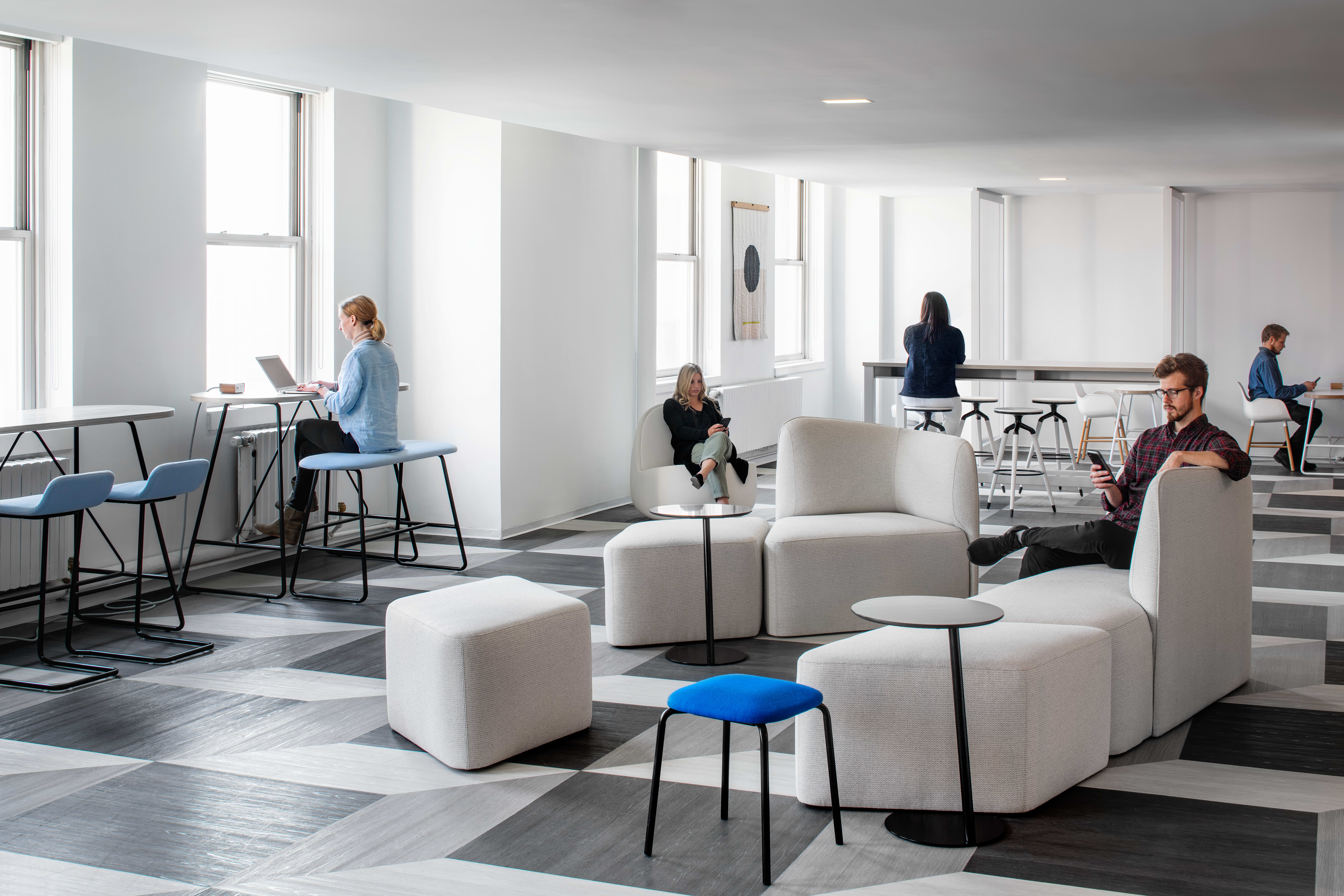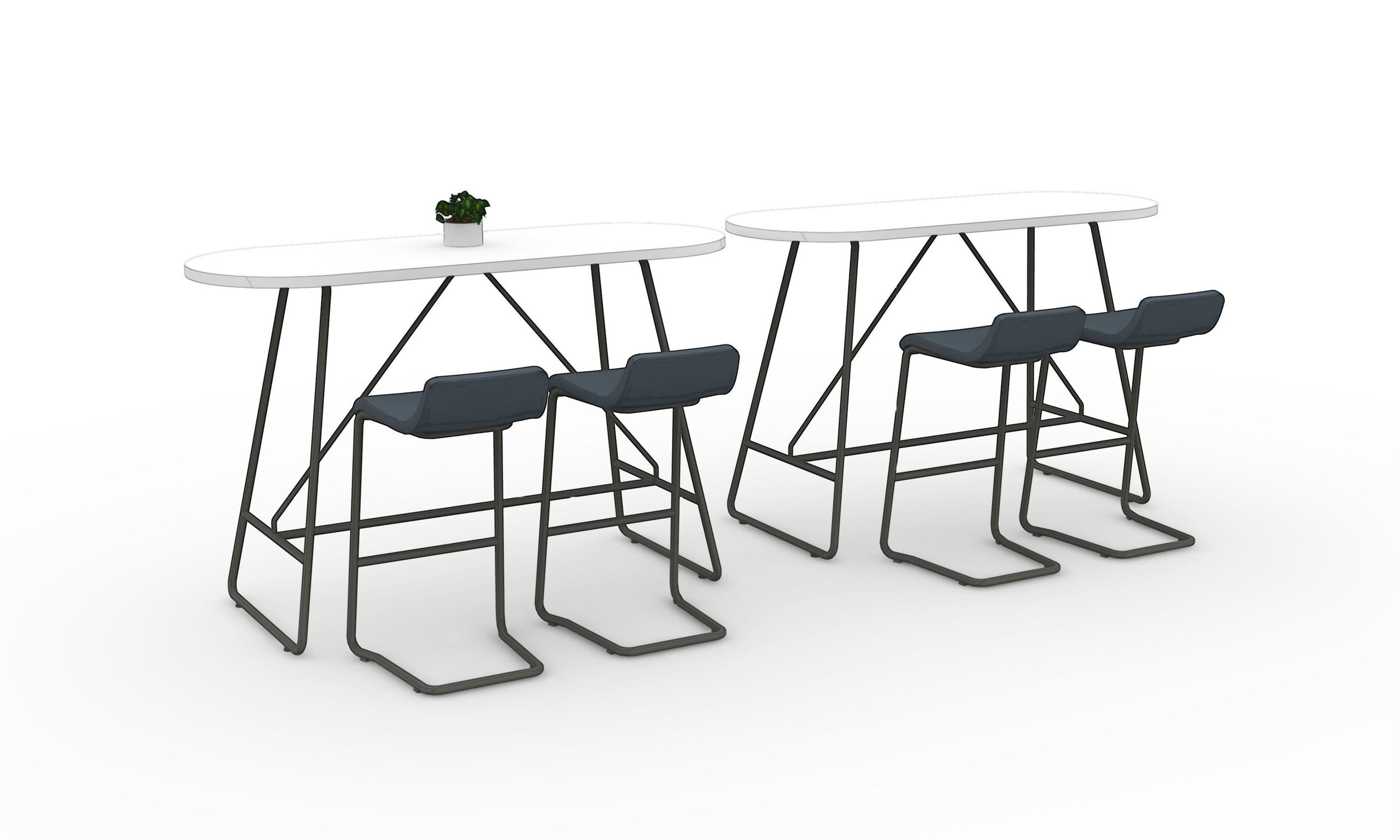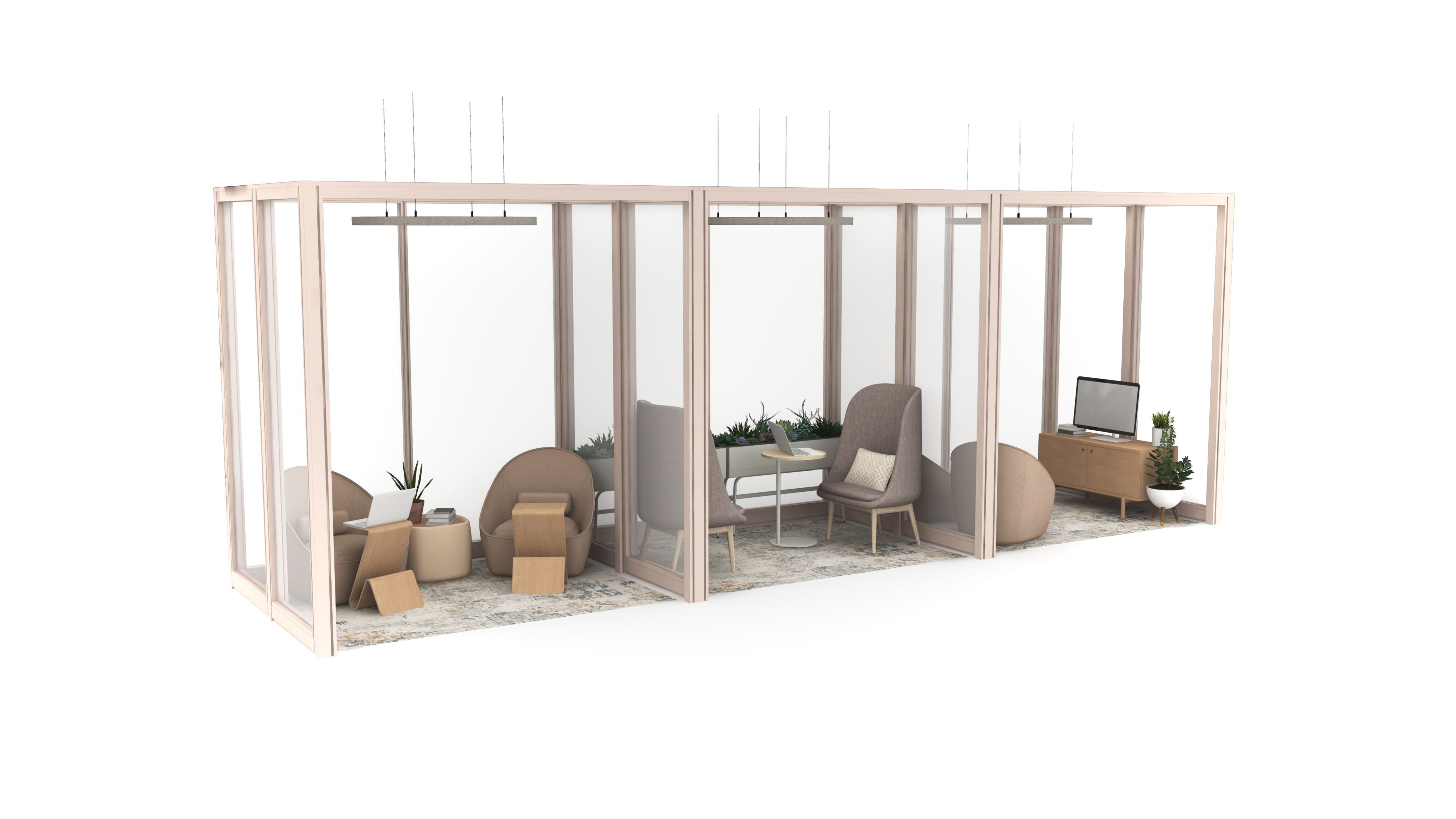Design to Dissuade Dysregulation
As designers and space-planners, we have a responsibility to think about the experience of the individuals within that space, and to the best of our abilities, communicate and provide a sense of safety, security, and acceptance.
While we cannot understand the full breadth of individual needs, Trauma Informed Design principles should be considered to deter common modalities of dysregulation. Below, is a non-comprehensive list of considerations through the lenses of environment, space, and furniture, that many may find helpful in maintaining regulation.
Environmental Considerations
- Mitigate intrusive sounds like slamming doors or buzzing from overhead lights.
- Avoid visual suggestions of potential security lapses like broken windows, dark stairwells, stains, and neglected equipment.
- Plan to contain odors that may be offensive by specifying smoking areas far enough away from building entry points.
- Whenever possible, utilize natural lighting, or consider lighting options that are adjustable. At minimum, lighting should not flicker.
Spatial Considerations
- Allow for predictable layouts and expected navigation of the space, avoid blind turns when possible.
- Include areas with high ceilings and clear sightlines.
- Consider cool colors that may provide a sense of calm. Avoid large areas of stark white walls.
- Incorporate dedicated spaces for activities like meditation or yoga.
- Consider adjacencies between spaces to be mindful of acoustics.
Furniture Considerations
- Specify furniture options that portray a sense of softness and comfort. Avoid large quantities of industrial-feeling furniture.
- Include options that allow for conversations to be conducted with individuals seated side-by-side, as face-to-face conversations may feel challenging at times.
- Provide opportunities for a sense of refuge or protection by considering furniture options that have high backs or that wrap around the user.
- Consider accessibility for a diverse workforce.
- Lockable storage options, especially in environments where there are a majority of shared spaces.
Understand why trauma is and the importance of Trauma Informed Design. Define dysregulation types.
Dysregulation is always possible. View considerations to promote regulation when it happens.








